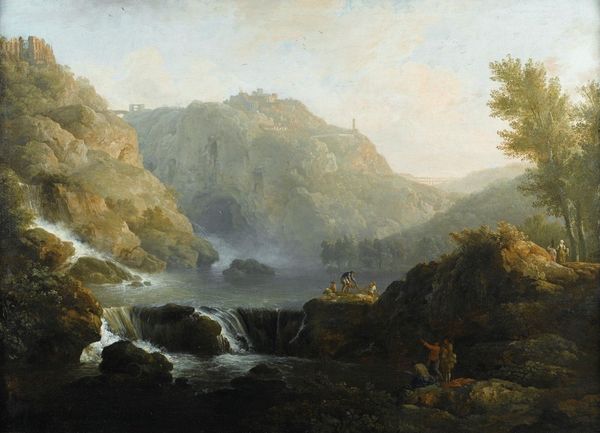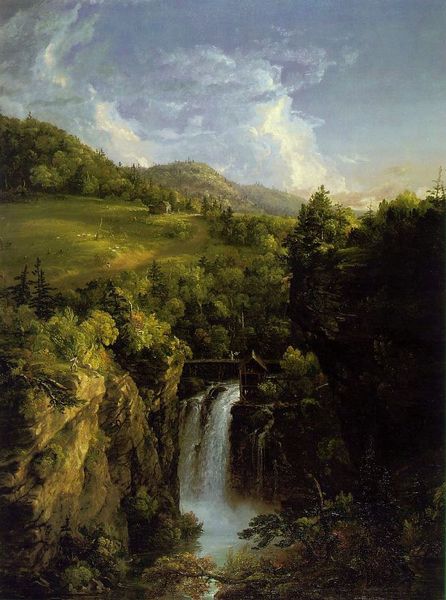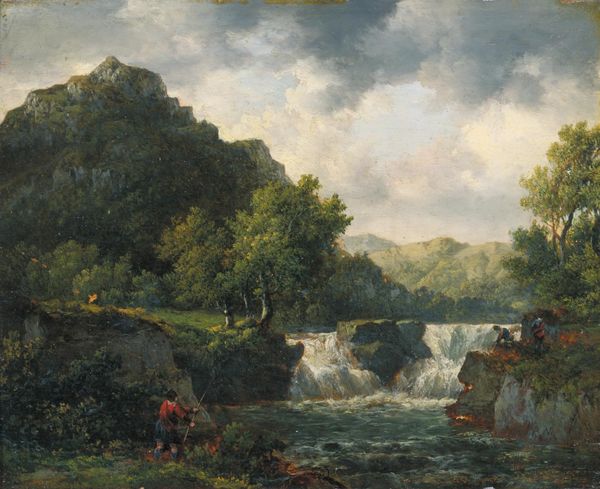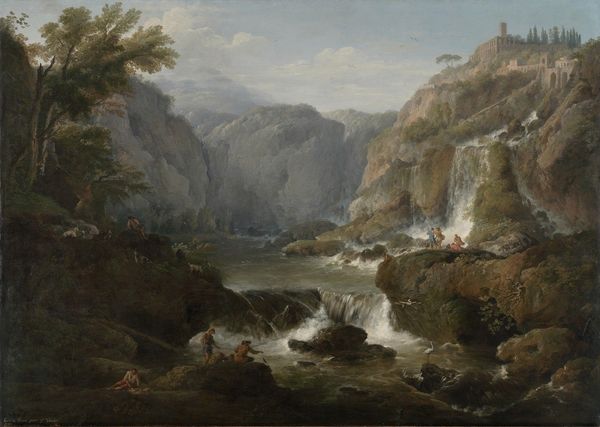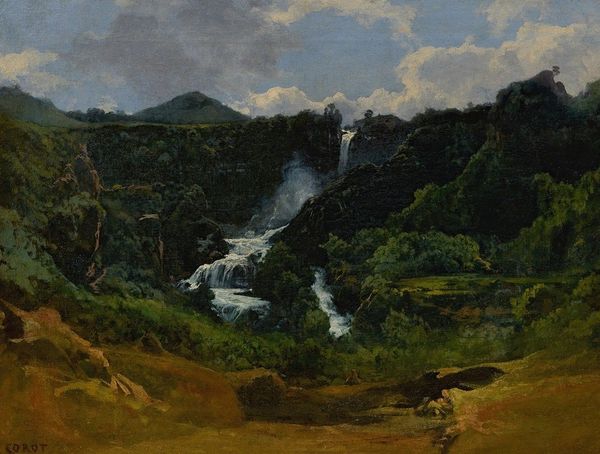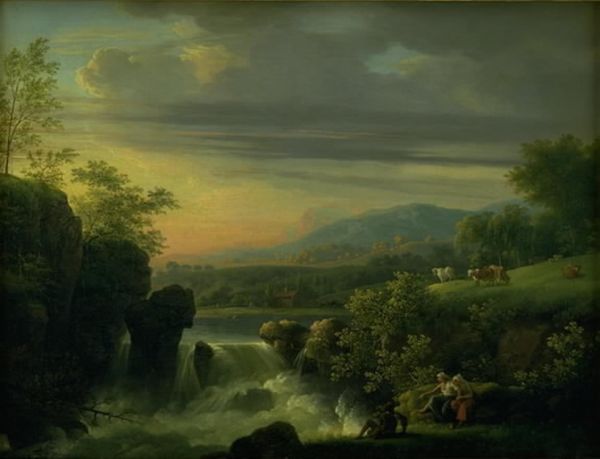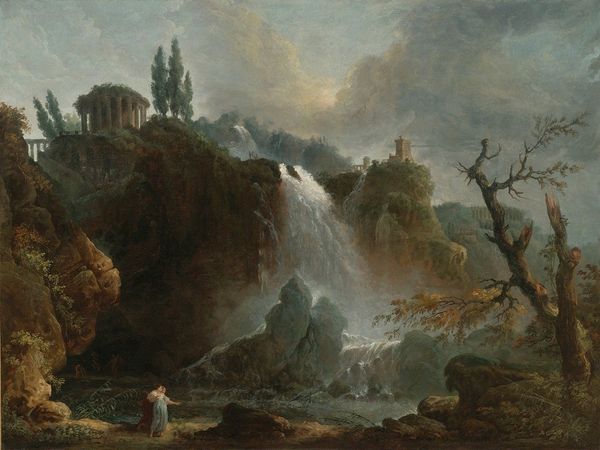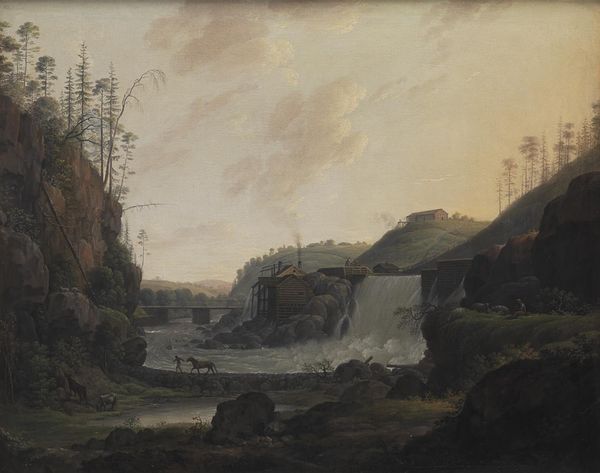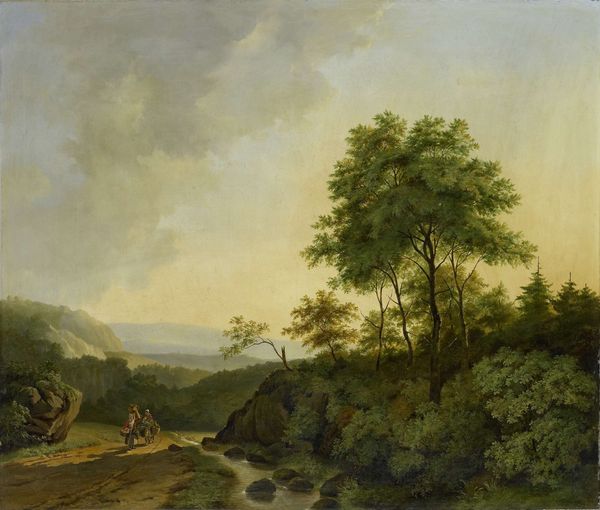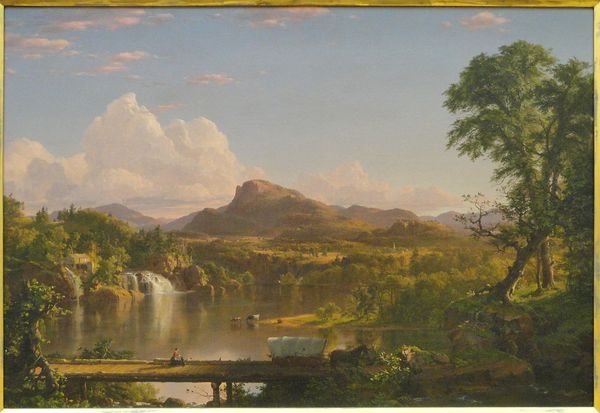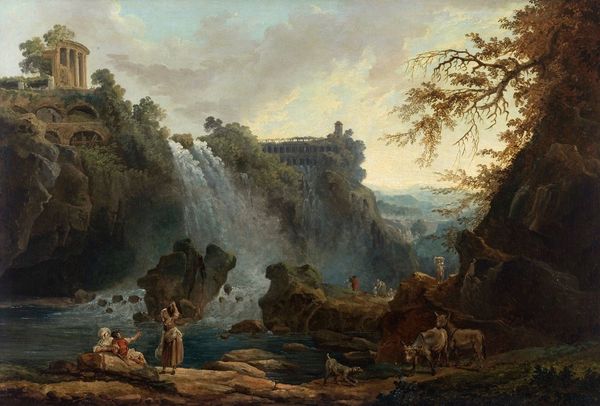
painting, oil-paint
#
painting
#
oil-paint
#
landscape
#
waterfall
#
romanticism
#
cityscape
#
academic-art
#
realism
Dimensions: height 78 cm, width 107 cm
Copyright: Rijks Museum: Open Domain
Curator: Ah, here's Cornelis Apostool's oil painting, "The Anio Valley with the Waterfalls of Tivoli," believed to be made sometime between 1800 and 1825. Editor: Immediately, the sense of romantic sublimity overwhelms me, yet tempered by what seems almost clinical observation. The structure adheres strictly to a central vanishing point, grounding the dynamism. Curator: Apostool, certainly infuses a romantic appreciation of nature's grandeur, but his vision is anchored by precise topographic interests, typical of academic realism, no? Notice the ruins, the figures at the bridge. There's a conscious staging happening here, not merely an embrace of wildness. Editor: The calculated positioning of the city crowning the falls certainly indicates deliberate contrivance. Beyond surface representation, it echoes the symbolic dominion of the man over the raw energy of nature, even if cloaked within Romantic visual vocabulary. Is this nature as stage or mirror of the human soul? Curator: Indeed. These structures on the edge of the precipice, set against the ceaseless waterfall—it’s almost allegorical. Perhaps concerning the precariousness of civilization against the eternal forces? One could see reflections on transience and mortality encoded in this depiction. The falls as tempus-fugen? Editor: An arresting thought. The carefully controlled tonality heightens that dramatic juxtaposition—from the almost dreamlike upper sky to the shadowed foreground. Semiotically, the painting feels like it hinges on that tonal divergence, reinforcing symbolic ideas through pictorial space. Curator: Precisely. It shows us not simply the Anio valley but mediates a specific perception of it, filtered through philosophical and, likely, personal sentiment. This painting feels significant, not solely picturesque. Editor: Agreed. By analyzing its forms and strategic employment of visual motifs, we perceive this as a structured, almost rhetorical argument expressed through landscape painting. Thank you for revealing some hidden gems contained within this detailed view. Curator: My pleasure. Recognizing the cultural and even personal symbolic weight—now we grasp how this picturesque view resonated much deeper within its time.
Comments
No comments
Be the first to comment and join the conversation on the ultimate creative platform.
